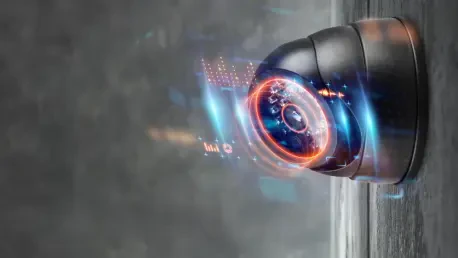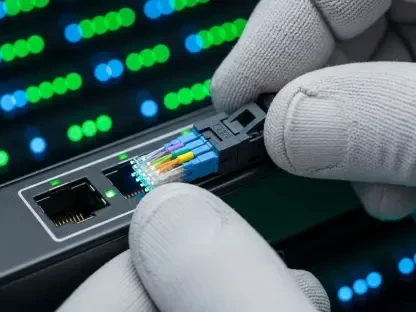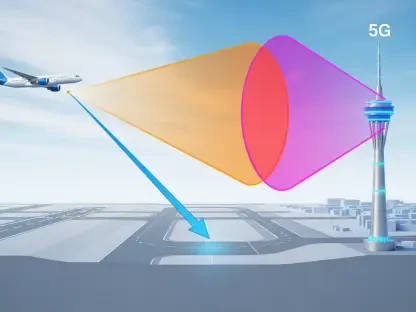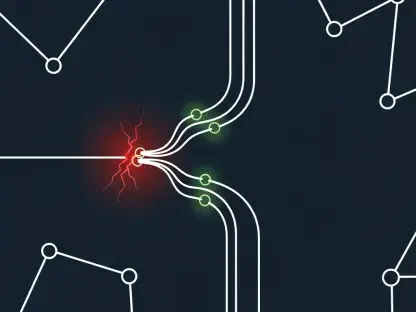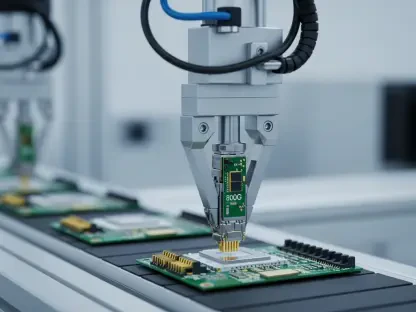In the evolving landscape of film and broadcast production technology, ARRI’s introduction of the Network Interface Adapter NIA-1 stands as a pivotal innovation by melding traditional camera control systems with modern IP networks, enhancing functionality across filmmaking and live production. This device was launched with a focus on unifying established LBUS-based systems with burgeoning IP workflows, offering novel opportunities and capabilities. With the NIA-1, ARRI has set a new industry benchmark, facilitating integration with third-party devices and enabling advanced remote functionalities in various scenarios.
Bridging Traditional and Modern Technologies
Seamless Integration and Enhanced Capabilities
The NIA-1 marks a transformative advancement in camera control technology. By offering seamless Ethernet connectivity, it bridges the gap between long-standing LBUS-based systems and the newer, more flexible IP network infrastructures. This ensures that time-tested technologies can effectively coexist with cutting-edge digital workflows, providing a unified platform for enhanced functionalities. With Ethernet connectivity, users gain the advantage of controlling camera and lens operations with minimal latency, thus pushing the boundaries of what can be achieved, especially in demanding production environments. Extending compatibility beyond ARRI’s native products, the NIA-1 supports third-party cameras such as the Blackmagic URSA Cine and Sony Burano. This open approach to interoperability is a critical step forward, allowing for a more inclusive ecosystem and promoting technological synergies within the industry. Future software updates potentially expanding support to other models like the Sony Venice highlight ARRI’s commitment to continual development and adaptation of its tools to meet evolving production needs.
Design and User Interface Innovations
A compact yet robust design characterizes the NIA-1, incorporating connectivity options through LBUS, Ethernet, and USB-C. The adapter’s intuitive nature is visible in its user-friendly interface, enhanced by a touchscreen display that provides real-time status updates for each connection. This design not only simplifies operations but also ensures immediate access to crucial information. Additionally, the NIA-1’s web-based management interface allows users to control devices from anywhere within the network, providing unparalleled flexibility in setup and oversight. The concept of network channels is another noteworthy innovation introduced by ARRI with NIA-1. Instead of intricate manual IP configurations, users can assign a network channel letter to each connected device, simplifying connectivity while preserving more advanced options for those with complex network setups. Together, these features significantly reduce setup times and complications, making the NIA-1 an adaptable solution for diverse shooting conditions.
Expanding Compatibility with Third-Party Systems
Integrating within the ARRI Ecosystem
The introduction of the NIA-1 focuses heavily on enhancing third-party camera compatibility, benefiting users who have already invested in ARRI’s ecosystem, particularly those using the Hi-5 hand unit. By connecting directly via the network and reducing reliance on specialized cables, the NIA-1 effectively delivers comprehensive control over camera functionalities through ARRI’s set of ECS tools. This integration not only expands the operational environments where ARRI’s technology can be utilized but also showcases a trend toward more flexible and versatile filmmaking technologies. Users gain an unprecedented level of operational flexibility, with access to a broader range of equipment functionality.
Advantages in Live Broadcast Scenarios
In live broadcast environments, ARRI’s NIA-1 complements existing solutions like the ALEXA 35 Live and the MultiCam System. Its ability to integrate with systems like the ARRI LPS-1, coupled with a secondary Ethernet tunnel, allows for precise and real-time control over substantial distances. This makes it ideal for dynamic, large-scale broadcast scenarios where traditional control methods may fall short. By offering plug-and-play connectivity through Ethernet or fiber cables—such as in the 360 EVO stabilized remote head system—ARRI facilitates a robust, versatile solution for various production needs. Whether addressing complex motion control challenges or operating in demanding conditions, the NIA-1 enhances reliability and efficiency.
Enhanced Applications in Specialized Filming Scenarios
Tackling Challenging Production Conditions
ARRI emphasizes that the NIA-1’s utility extends to specialized filming contexts, including underwater shots, crane setups, and intricate motion control operations. These situations often demand remote operations where standard tethered connections could prove cumbersome or unfeasible. By harnessing lengthy Ethernet or fiber optic connections, the NIA-1 enables stable, long-distance user control, a critical factor in challenging filming scenarios. This technicality significantly reduces the dependency on radio signals, traditionally plagued by limited range, thus enhancing both control precision and operational reliability. The device’s capabilities make it exceptionally suited for situations requiring meticulous planning and execution, broadening creative possibilities across diverse projects.
Future Projections and Industry Collaborations
The ongoing industry discussions underscore a consensus that the NIA-1 opens new horizons within the professional video sector, especially for seasoned ARRI users. With the availability of the NIA-1, the potential for expanded camera operations and advanced remote capabilities becomes more tangible, positioning ARRI prominently at the intersection of traditional and new-age filming technologies. Moreover, ARRI’s openness to facilitating collaborations with third-party vendors further indicates a strategic effort to explore and expand how NIA-1 can be leveraged across different technological spectrums. This thoughtful approach underscores a visionary outlook, embracing compatibility across a broader technology provider network.
Redefining Camera Control in the Professional Video Landscape
In the rapidly changing world of film and broadcast production technology, ARRI has made a significant impact with the introduction of the Network Interface Adapter NIA-1. This innovative device effectively bridges the gap between traditional camera control systems and modern IP networks, thereby enhancing both filmmaking and live production processes. Launched with the intention of merging well-established LBUS-based systems with emerging IP workflows, the NIA-1 presents new opportunities and capabilities to users. Setting a new standard in the industry, ARRI’s NIA-1 facilitates seamless integration with third-party devices. It also provides sophisticated remote functionalities in various production environments, making it a versatile tool for filmmakers and broadcast professionals. Through its pioneering approach, ARRI not only simplifies complex processes but also expands creative possibilities in film and broadcast production, ensuring that users can stay ahead in the ever-evolving technological landscape.
